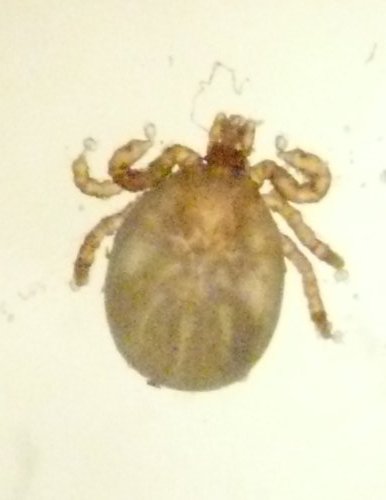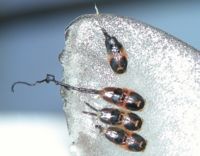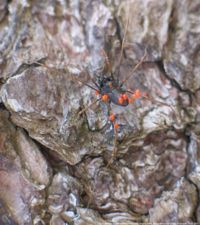Difference between revisions of "Parasites"
m (Unprotected "Parasites") |
|||
| (One intermediate revision by one other user not shown) | |||
| Line 1: | Line 1: | ||
| + | {{frontpage | ||
| + | |pagetitle =Parasites | ||
| + | |pagebody = Parasitism is the relationship between two organisms where one is living at the expense of the other. Parasites are highly specialised, have nutritional dependence on the host and can avoid an immunological attack. They have evolved to integrate their life cycle with that of their host species. | ||
| − | + | The two main groups of parasites are the microparasites and the macroparasites. Protozoa are microparasites as they multiply within the host. Macroparasites on the other hand, establish themselves in or on the host but produce eggs or larvae which are dispersed to the environment. Macroparasites include helminths and arthropods. The number of macroparasites in the body reflects the number which invaded the animal. | |
| + | |||
| + | |contenttitle =Content | ||
| + | |contentbody =<big><b> | ||
| + | <br><br> | ||
| + | <categorytree mode=pages>Parasites</categorytree> | ||
| + | |||
| + | </b></big> | ||
| + | |logo =Larval tick.jpg | ||
| + | }} | ||
| + | |||
| + | ==Useful Resources== | ||
| + | [[Image:Sea Lice.jpg|right|thumb|200px|Sea Lice - Copyright Joseph G. Kunkel at The Kunkel Fish & Aquatic Invert Site]][[Image:Mites parasitising a harvestman.jpg|thumb|right|200px|Mites parasitising a harvestman - Wikimedia Commons]] | ||
| + | |||
| + | *http://www.rvc.ac.uk/review/Parasitology/Index/Index.htm | ||
| + | ''Information on the diagnostic tests, collecting of samples and identification of parasites'' | ||
| + | |||
| + | *[[Parasitology videos]] | ||
| + | |||
| + | *[http://cal.vet.upenn.edu/projects/parasit06/website/index.htm Veterinary Parasitology Images "Courtesy of Thomas Nolan, Laboratory of Parasitology, University of Pennsylvania School of Veterinary Medicine" ] | ||
| + | |||
| + | ==[[WikiWords]]== | ||
| + | |||
| + | ''A glossary of the important concepts and terms in parasitology'' | ||
| + | |||
| + | ==References== | ||
| + | |||
| + | ''This section relies heavily on lecture notes and input from:'' | ||
| + | |||
| + | *'''Professor Dennis Jacobs''' | ||
| + | |||
| + | *'''Dr Mark T Fox BVetMed PhD HFEA DipEVPC MRCVS''' | ||
| + | |||
| + | ''Other sources'' | ||
| + | |||
| + | *Wall and Shearer: '''Veterinary Entomology''' | ||
| + | |||
| + | *Taylor, Coop and Wall: '''Veterinary Parasitology''', third edition | ||
| + | |||
| + | *http://www.parasitology.com/ | ||
| + | |||
| + | *http://www.bio.umass.edu/biology/kunkel/fish/ | ||
| + | |||
| + | *http://micropics.org.uk/Muscidae/muscidae.htm | ||
| + | |||
| + | *http://www.veterinariavirtual.uab.es/parasito/diagnos003$/coproeq.htm | ||
| + | |||
| + | *http://www.vet.uga.edu/VPP/clerk/siegel/index.php | ||
| + | |||
| + | *http://cal.vet.upenn.edu/projects/dxendopar/diagnostages/felinelibrary/fellib.html | ||
| + | [[Category:Infectious_Agents]] | ||
Latest revision as of 20:05, 25 June 2015
Parasitism is the relationship between two organisms where one is living at the expense of the other. Parasites are highly specialised, have nutritional dependence on the host and can avoid an immunological attack. They have evolved to integrate their life cycle with that of their host species. The two main groups of parasites are the microparasites and the macroparasites. Protozoa are microparasites as they multiply within the host. Macroparasites on the other hand, establish themselves in or on the host but produce eggs or larvae which are dispersed to the environment. Macroparasites include helminths and arthropods. The number of macroparasites in the body reflects the number which invaded the animal.
Useful Resources
Information on the diagnostic tests, collecting of samples and identification of parasites
WikiWords
A glossary of the important concepts and terms in parasitology
References
This section relies heavily on lecture notes and input from:
- Professor Dennis Jacobs
- Dr Mark T Fox BVetMed PhD HFEA DipEVPC MRCVS
Other sources
- Wall and Shearer: Veterinary Entomology
- Taylor, Coop and Wall: Veterinary Parasitology, third edition


